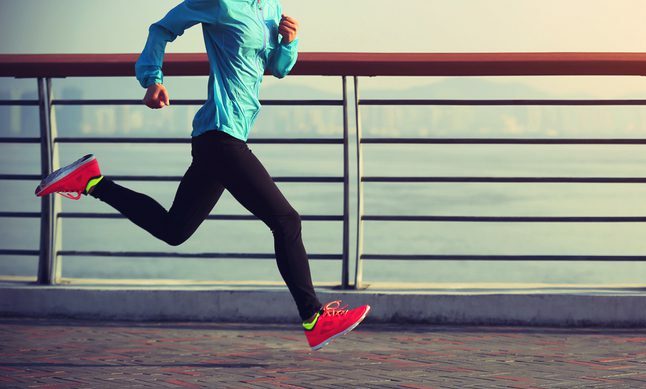If you’re wrapping up a big block of training or have been charging up and down a lot of hills, there’s a good chance you’ll feel some quad tightness. By adding a few simple exercises into your weekly routine, those quads will be feeling brand new.
The quadriceps (there are four distinct muscles: the rectus femoris, vastus lateralis, vastus intermedius and vastus medialis) are responsible for extending the leg and helping with movements like walking, running and jumping. Quad tightness can result from various factors, including overuse, improper running mechanics and muscle imbalances. Since the quads and hip flexors work together during running, tightness in one area can affect the other, so it’s essential to incorporate exercises that target both the quads and the hips. These four exercises will help ease quad tightness while also addressing hip-related issues.

Sissy squat
A sissy squat helps runners strengthen the quads and improve knee stability. (The sissy squat name is a homage to King Sisyphus from Greek mythology—who, as a punishment, was forced to push a boulder to the top of a mountain, on repeat, apparently creating great quads.) For this exercise, you’ll want to grab onto a wall or secure railing.
Stand with your feet shoulder-width apart. Shift your weight onto your heels and slowly lower your body by bending your knees, keeping your torso upright.
Continue lowering yourself until your knees are fully bent and your thighs are close to parallel with the floor. Push through your heels to return to the starting position, straightening your knees and returning to standing.
Work on being very controlled as you do this exercise—it takes practice! Focus on engaging your quadriceps throughout the exercise.
Banded march
T00-tight hip flexors can lead to overloaded quads. The banded march helps loosen and strengthen both hip flexors and extensors.
Start by standing with feet hip-width apart, with a resistance band looped around your feet.
March in place by drawing your right knee up toward your chest (to a 90-degree angle), then returning to starting position.
Draw your left knee up to your chest, then continue to alternate as you pump your arms as if you’re running. Do 10 raises on each side to start, and work up to several sets.
Couch stretch
You can also do this stretch using a ball, wall or any sturdy surface. Use a cushion or mat under your knee if you’re placing it on a hard surface, and make sure to keep your core engaged throughout the exercise.
Bend your left knee and place your shin along the back cushion of a couch (or a chair) with your toes pointed upward. Keep your left thigh in line with your body.
Place your right foot in front, aligning your knee above your ankle. Engage your core and glutes, and keep your hips square.
Hold for at least 45 seconds, then do the opposite side.
90/90 wipers
Make sure you are always performing stretching and strengthening exercises after you have warmed up with some brisk walking or easy running, and try to do your strength-training sessions on days when you have also planned harder or faster running workouts. Allowing your easy days to be entirely devoted to rest and recovery will allow your body to heal and grow stronger.

